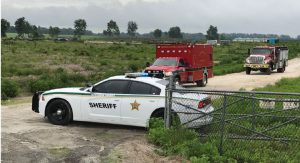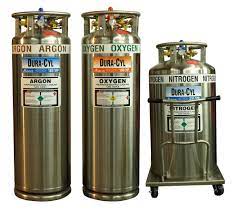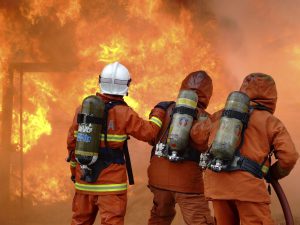
Cylinder Inspection Training: Why a Maintained Cylinder Is a Happy Cylinder
Uncover the importance of gas cylinder inspections and training. Dive deep into ensuring safety, boosting efficiency, and prolonging cylinder life.
A recent article I posted, stating that two sons were killed while moving a cylinder, created some comments and questions. Some of the comments were disturbing. For example, one comment stated, “So two people were killed in a industrial accident, in a arguably third world country”. The constant question that was being asked, why did it happen? After those responses I thought it important to point out that there are cylinder related fatalities in all countries, including the United States. And many times, the authorities have no idea why a cylinder ruptured, they just report the aftermath. I located two fatalities in the United States that were investigated by our Federal government, The Occupational, Safety and Health Administration (OSHA). I will cover the basic information but will not mention specific victims or companies. I have been accused of not providing full details. My reasons for not listing more specific data are to keep the subject focused on the incident, a cylinder rupture. Avoiding going down the path of placing blame or allowing others to place blame. I want to focus on the broad issue of training everyone to visually inspect all cylinders and handle them safely.
In June of 2018 there was a cylinder rupture in Florida. Employees of an iron works company were moving high pressure gas cylinders. While one of the workers was moving a cylinder, it exploded. The worker suffered extensive injuries and died on the scene. It was reported that the 50 other cylinders in the area were not affected. The investigation showed that the cylinder suffered a catastrophic structural failure but gave no specifics. I was unable to find any information on the specific reason for the failure. It is unknown if the cylinder was weakened by prior damage, corrosion or dropped during the moving process. OSHA recorded the fatality and imposed an initial penalty to the employer of $12, 378 for serious safety violations. The fine was later reduced to $7378.
That specific cylinder contained a gas which contained an alternative fuel produced by another United States company. That company stated, “The industry is well aware that once cylinders leave the company’s possession, we cannot be certain that OSHA and Compressed Gas Association guidelines are followed.” The company was stating that they shipped a safe cylinder, but once it was under the control of the receiving facility, it became their responsibility. OSHA has investigated that company and imposed a $52, 045 fine for serious safety violations including failing to train employees who handle hazardous materials.

The other incident occurred in March of 2020 in the state of Utah. This incident was not witnessed and there was no surveillance video. There was a report of an explosion just after 0700 in the morning. Arriving rescue personnel located a large warehouse with obvious structural damage. When they entered the building, they found a male victim inside, deceased. Investigators believe the victim was transferring oxygen between cylinders when one of the cylinders ruptured. They were unable to determine why the cylinder ruptured. OSHA also investigated this incident and fined the company for safety violations in the amount of $1500. The company is disputing the fine.

These two incidents have common themes. The workers who lost their lives were performing a function they have likely performed on numerous other occasions. Investigators knew a cylinder had ruptured, but they have no reason why they ruptured. The incidents were investigated by government officials. And the resulting investigations resulted in fines for violations of safety standards, including failing to train their employees.
Any time someone works with, or around a high-pressure cylinder, they take on some risk. The risks include embolisms, inhalation, impact or the failure of a safety device. The cylinders contain a pressurized gas. The pressure of the gas can cause injuries if it is not contained, including entering the skin and the risk of an embolism. The contents of the cylinder may also be harmful to the handler. If the gas escapes, it may be harmful to breath the contents. The weight of the cylinder becomes a concern if it topples. The weight of a cylinder can shear its valve, cause a rapid loss of gas and possible creating a dangerous projectile. Even the Burst disc, a safety device, can be dangerous if it suddenly bursts allowing the gas to discharge at a high rate. The rate of discharge can injure someone or cause to topple if it is not secure and/or capped.
The one constant in both the listed instances, and others around the world, every year, is that people handling the high-pressure cylinders died during the process. It is unknown if the cylinders were safe to handle, having prior damage, or they were mistreated during the handling process. The only option to avoid either of these scenarios, is to train the employees handling the cylinders. They need to understand what makes a cylinder unsafe, how to safely handle all high-pressure cylinders, and what to do if they come across a questionable cylinder. All these things can be conducted during a proper cylinder visual inspection training class.
It should be noted that while searching the internet for information on these two ruptures, the incidents came up on specific websites. Websites for personal injury attorneys. Numerous personal attorney websites listed the incidents and wrote brief blogs. This is important to note for a facility. Not only will they need to respond to a government investigation, but they may also face the potential of civil litigation.
Hopefully, after taking visual inspection training, the cylinder handlers will no longer take cylinders for granted. Realizing the potential of a destructive rupture. The training will also protect the employer from having to give their condolences to the family and friends and prevent government fines, sanctions, and civil litigation.

I enjoy continuing to build the business based on safety since 1999. CTS focuses on the inspection of high pressure cylinders, the maintaining of the valves and basic maintenance of high pressure compressor systems. CTS stays current in techniques and tools to train both the new and novice employee. We publish articles, update training tools and have created an APP to assist during the inspection process.
#cylinder #safety #hazmat #training #cylinderinspectiontraining #cylindex

Uncover the importance of gas cylinder inspections and training. Dive deep into ensuring safety, boosting efficiency, and prolonging cylinder life.

Is your composite cylinder showing signs of wear? Discover when to seek a professional repair service in our comprehensive guide.

29 CFR 1910.101 intro Handling cryogenic cylinders involves working with extremely low-temperature gases that pose unique safety risks. To ensure the safe handling, storage, and transportation of these hazardous materials,

Introduction Firefighters encounter many risks while on duty, including hazardous materials and high pressure bottles. High pressure bottles are used for a variety of purposes in firefighting, including powering hydraulic